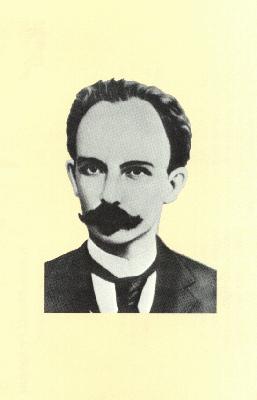 Return
to the Clandestine
Radio Intel QSL Gallery
Return
to the Clandestine
Radio Intel QSL Gallery
Radio Marti
By Nick Grace C., February 8, 1998.
U.S. broadcasts to Cuba since Castro's revolution
in 1959 has followed a winding path, beginning with Radio
Swan (see QSL image
and summary), leading to Radio Marti,
and encompassing dozens of independent and CIA-sponsored stations and programs.
Oddly enough, Radio Marti can be tied to both
Radio Swan and the still-active La
Voz de Fundacion. Jorge Mas Canosa, former broadcaster with
Radio Swan and president of the Cuban
American National Foundation (which runs La Voz
de Fundacion), was the head of the presidential advisory board for
Radio Marti during the mid-1980's (Soley).
As a tool of public diplomacy, Radio Marti
has been the most effective in affecting Cuban domestic politics thanks
to the lessons US policymakers learned from Radio
Swan.
Radio Marti's beginnings
can be traced back to a speech in 1981 when US President Reagan declared
that it was his administration's intention to establish a Radio Free Cuba
that would operate like Radio Free Europe
and Radio Liberty. In order to see the
station begin, however, its budget had to be passed through the US Congress,
and in 1982 the Senate voted down the proposal. A year later legislation
did indeed pass through and on October 4, 1983, Ronald Reagan signed the
Radio Broadcasting to Cuba Act Public Law 98-111.) Unlike Radio
Free Europe and Reagan's original vision, Radio
Marti was to be placed under the authority of the Voice of America
and "subject to the same limitations of U.S. government controls as is
the VOA" (Hansen, p.120).
Fidel Castro, along with Liberal members of U.S.
Congress, complained. He immediately threatened to broadcast Cuban
stations on the same frequencies as commercial U.S. stations on medium
wave, and after Radio Marti's inaugural broadcast
he cut an immigration agreement with the U.S. government (ibid,
p.121).
Radio Marti signed
on the air on May 20, 1985 on 1160 kHz with 14 1/2 hours of programming
from VOA's transmitters in Marathon Key, Florida. Staff of the Radio
Marti Office of Research monitors Cuban broadcasts, reviews Cuban publications,
talks with Cuban immigrants, defectors and visitors in order to gauge what
domestic broadcasts in Cuba lack. "We had to find out what the Cubans
were telling their population," Director Ernesto Betancourt explains, "and
then determine what information should be made available to them to compensate
for the omissions" (ibid, p.120). Over time, programming hours
increased and included such items as news, entertainment, soap operas and
messages for Cuban-Americans to their relatives back on the island.
Even the liberal New York Times capitulated
on its initial criticism of Radio Marti after
printing an editorial that states "Contrary to our statement, the station
appears to have found a responsive audience and filled a void in Cubans'
information... It has avoided propaganda and supplemented, not duplicated,
commercial Spanish-language broadcasts from Florida" (March 22, 1986 as
quoted in Hansen, p.121).
Reports from exiles, defectors, and even journalists
within Cuba also support the station and give credence to the fact that
Radio Marti is the most-listened to radio
station on the island. One human rights activist says it provides
the "ability to respond to the monologue Fidel Castro has been sustaining
with the Cuban people" for decades (Hansen, p.122). A journalist
in 1996 said that the Cuban government continues to slander the station
"in spite of the fact that its ratings always beats that of the stations
which broadcast in the island" (Martinez).
The US government had tried its hands at broadcasting
propaganda to Cuba with dismal results. Radio
Swan was unveiled to support the Bay of Pigs invasion in 1960 but
after a few years it became Radio Americas
and finally fizzled from the air. These stations lacked an audience
effective enough to justify their expenditure, and many people point to
their hostile programming and lack of credibility as the cause. Radio
Marti, on the other hand, with its Office of Research presents itself
as a legitimate international broadcaster that competes with Cuban domestic
stations. In fact, Jorge Riopedre argues in an unpublished paper
that Radio Marti was a major influence in
many political initiatives undertaken in Cuba regarding AIDS and housing
(Riopedre).
Thanks to its success, Radio
Marti's activities were doubled in 1990 when TV
Marti began broadcasting television programs from Florida to Cuba.
Incidentally, authority for the activities of both stations was relegated
to the Office of Cuba Broadcasting (OCB) that year while remaining under
the auspices of the VOA.
Oddly, in 1993 critics of Radio
Marti charged the station with not following the VOA's standards
of objectivity, accuracy and balance, and in pure Washington fashion, the
OCB's budget was cut while money was appropriated to a series of review
panels to monitor its broadcasts (GAO/NSIAD-96-110 Letter: 2). On
top of this, the USIA's Office of Inspector General began an investigation
into Radio Marti's management and President Clinton signed an executive
order to "reinvent government" and Radio Marti's
Office of Research was dissolved as the OCB downsized.
Radio Marti employed
122 people and had an annual budget of approximately US$13.1 million in
1995 (GAO/NSIAD-96-110). It continues to broadcast 24 hours a day
for 7 days a week on various shortwave and mediumwave frequencies.
The USIA maintains a webpage with information
on Radio Marti at: http://www.usia.gov/usiahome/bbureau.htm.
Recent activity reports can be found here.
Hansen, Allen C. USIA: Public Diplomacy
in the Computer Age. Praeger. New York: 1989.
Martinez,
Martin Fernandez. "Awaiting the News from Radio Marti." CubaNet
News, July 1996.
Riopedre, Jorge. "Radio Marti: an Intercultural
Communication System." Unpublished 1995.
Soley, Lawrence C. and John S. Nichols.
Clandestine Radio Broadcasting. Praeger. New York: 1987.
---------.
Issues Related to Reinvention Planning in the Office of Cuba Broadcasting.
GAO/NSIAD-96-110.

 QSL courtesy of Ulis Fleming.
QSL courtesy of Ulis Fleming.
 Return
to the Clandestine
Radio Intel QSL Gallery
Return
to the Clandestine
Radio Intel QSL Gallery
